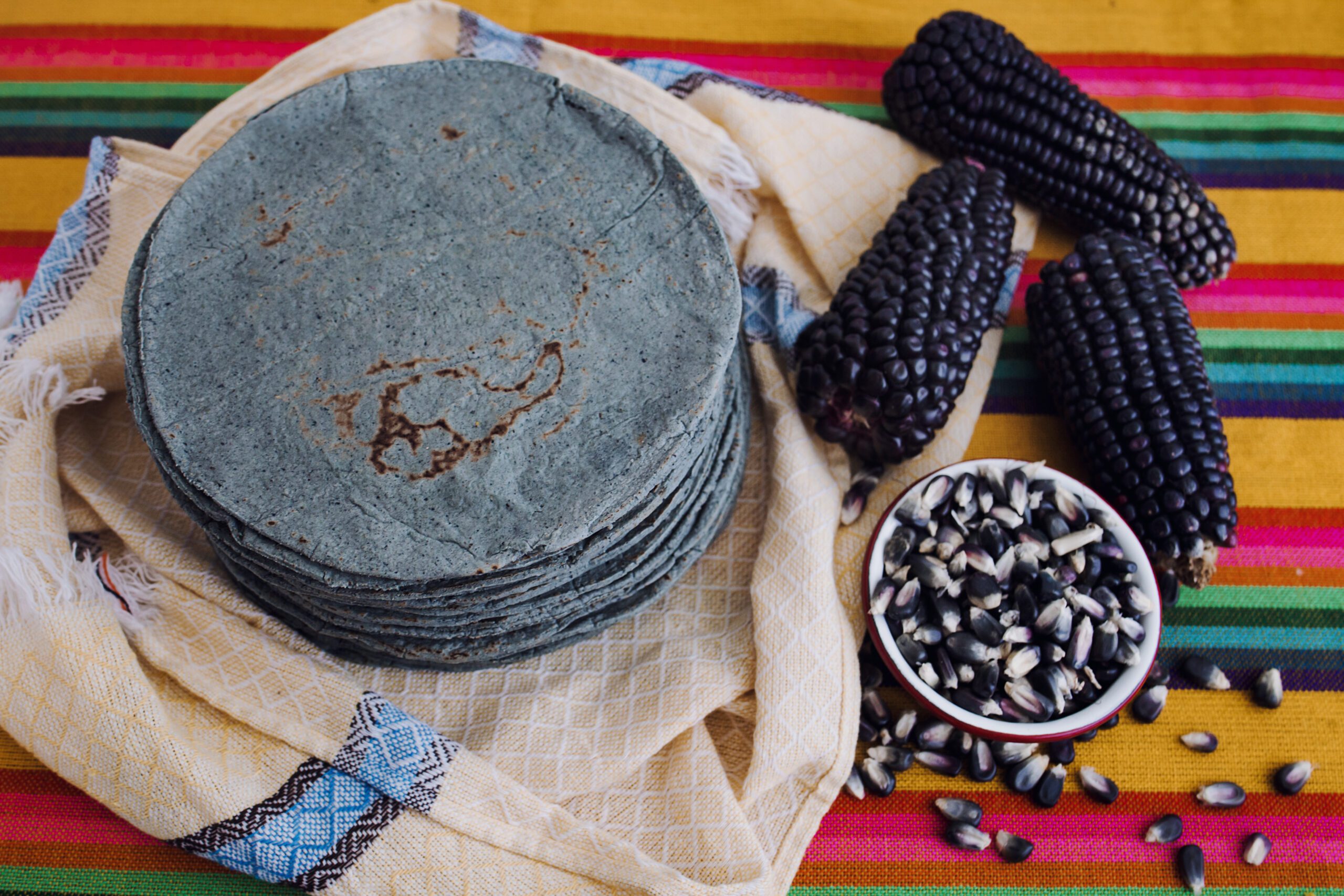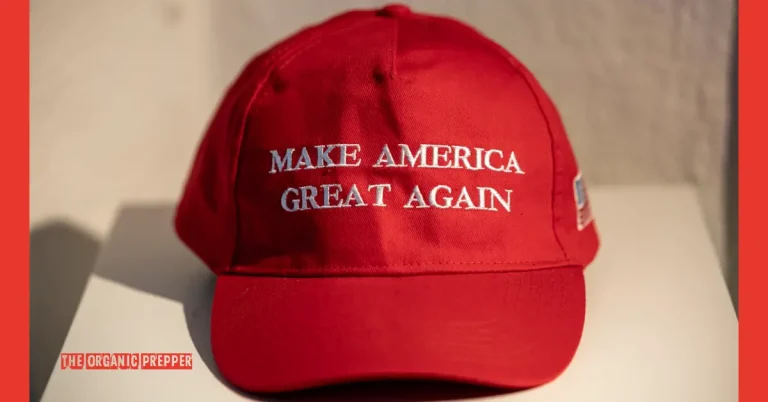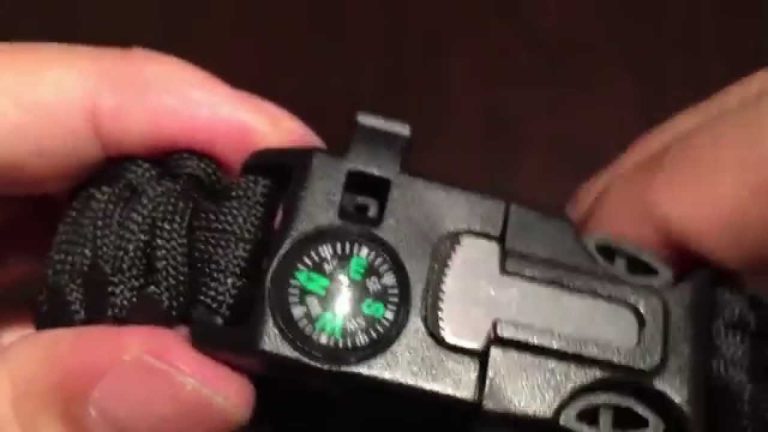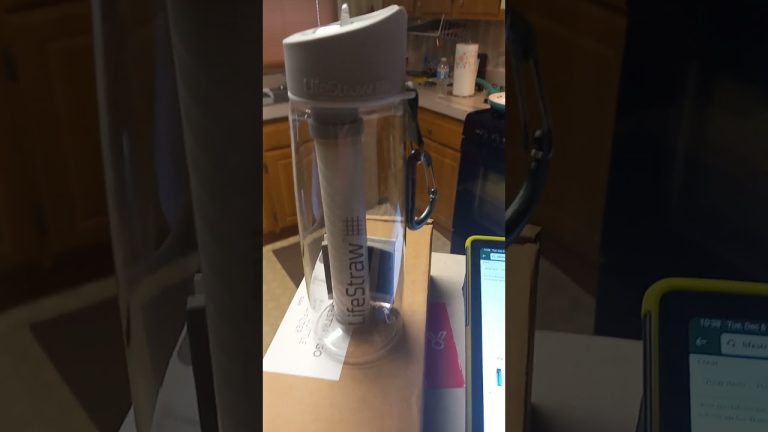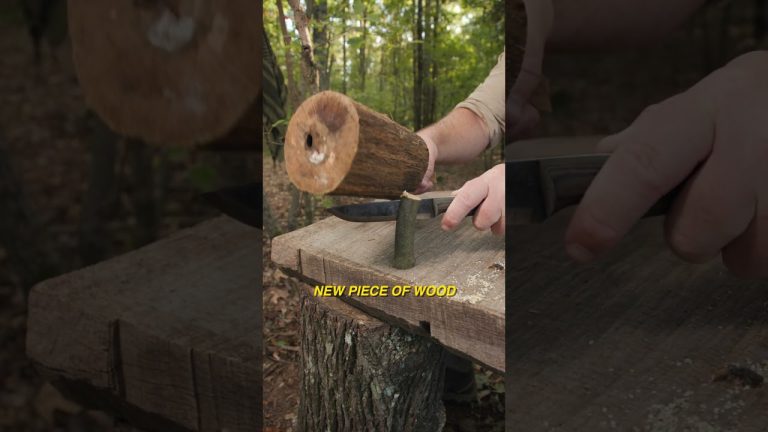Calling all preppers and homesteaders! Did you know whole grain corn in your emergency food storage has hidden potential? Follow these instruction to turn your corn into a delicious and nutritious staple: homemade masa. Plus learn how to make corn tortillas with it. Yum!

Some of the links in this post may contain affiliate links for your convenience. As an Amazon Associate, I may earn a small commission from qualifying purchases without any increase in price to you.
While popcorn is a popular choice for emergency food storage, it’s just the tip of the iceberg. Whole grain corn, available in various colors like yellow, white, and blue, offers a world of possibilities. By learning to process this versatile grain, you can create a range of delicious and nutritious foods. One such essential ingredient is masa, the cornerstone of many traditional dishes, such as tortillas, tamales, and pupusas. Best of all, this process utilizes only shelf-stable ingredients, making it perfect for long-term food storage.
The Secret Ingredient to Homemade Masa
Corn was developed by the ancient American peoples to make specific foods unique to their culture. Corn was a staple in the Americas long before the Europeans arrived on the scene, but they never contracted pellagra.
However, the Europeans using the same became quite ill. They were using this new grain to make foods that they were already used to eating, namely bread (cornbread) and porridge (grits/ polenta). In other words, they were using a New World ingredient to make Old World food, and it didn’t entirely translate. They were missing something crucial: nixtamal.
To get out of corn everything that it has to offer, you can’t use it in a European way. You have to use it in a Native American way.
How to Make Homemade Masa
Disclaimer: this takes a lot more preparation and effort than merely grinding it in your Nutrimill. However, I’m confident that once you try real, homemade tortillas from real, homemade masa, you will never want to go back.
Ingredients
- 2 cups whole dent corn
- 2 Tbsp calcium hydroxide (also called cal, or pickling lime – sometimes found in the canning aisle at the supermarket)
- 6 cups water
- 1 tsp salt
Equipment
Instructions
- Rinse your corn and put it in a saucepan over medium heat with the calcium hydroxide/pickling lime and water. Slowly bring it to a boil over a period of 20 minutes or so.
- Let it continue to boil for 10-15 minutes, then remove from heat.
- Let it sit undisturbed overnight or for at least 8 hours. This is when the magic happens — the chemical reaction that changes the nutrients in the corn so that they can be absorbed by the human digestive tract.
- When the allotted time has past, the pericarp, the outside bit of the corn, will have loosened considerably. Put the corn in a colander and rinse with cool running water as you rub the corn with your hands. Keep rubbing and rinsing the corn until all traces of lime and pericarp are washed away.
- Place the corn, now technically nixtamal, in the food processor with the salt. Process on High until the corn is at the proper consistency – it should be chopped up finely enough that it can be formed into balls. Sometimes I have to add as much as 3-4 tablespoons of additional water to get it the proper consistency.
Ta-da! You have made masa. This can be used for humble corn tortillas, tamales, and also pupusas, which are a kind of stuffed tortilla.

Here’s a picture of some masa I made. You may notice it is blue. No food coloring was added. That is the real, actual, non-photoshopped color. That is because I have a lot of blue corn in my food storage. I chose blue corn for two reasons:
- Why bother with boring yellow corn when it can be blue?
- Blue corn is higher in protein.
Also, there does not currently exist any GMO blue corn on the market. You can be guaranteed a non-GMO product when purchasing blue corn, if that is something that is important to you.
Turn the Masa into Homemade Corn Tortillas
I adore homemade masa and corn tortillas, and I love making them from scratch. They are immensely popular with my family, including the picky toddler. And really, making the masa is the hard part; making the tortillas is simple.
- To turn your masa into tortillas, first line your tortilla press with plastic wrap to keep the masa from sticking.
- Place a small portion (about 2-3 tablespoons worth) in the tortilla press and presssssssss. Remember you made a dough in the last masa-making step.
- Cook about 1 minute on each side on a HOT griddle or skillet.
I adore homemade masa and corn tortillas, and I love making them from scratch. They are immensely popular with my family, including the picky toddler.
Tips for Great Masa
- If the masa is too dry, add a little bit of water at a time to the masa, kneading it until it reaches the desired consistency.
- If your masa is too wet, add a bit more corn flour or masa harina to absorb the excess moisture. Knead until the desired consistency is reached.
- To prevent tortillas from sticking to the griddle or tortilla press, grease it well. You can also use parchment paper or plastic wrap.
- Tortillas that tear easily may be a little dry. Add a little water and knead until it’s pliable. Also, ensure you’re rolling the tortilla out gently and evenly.
Printable Recipe Card: Homemade Masa & Corn Tortillas

Homemade Masa and Corn Tortillas
Turn your corn into a delicious and nutritious staple: homemade masa. Plus, make corn tortillas with it!
-
1 food processor
-
1 tortilla press
-
plastic wrap
Homemade Masa
-
Rinse your corn and put it in a saucepan over medium heat with the calcium hydroxide/pickling lime and water. Slowly bring it to a boil over a period of 20 minutes or so.
-
Let it continue to boil for 10-15 minutes, then remove from heat.
-
Let it sit undisturbed overnight or for at least 8 hours. This is when the magic happens — the chemical reaction that changes the nutrients in the corn so that they can be absorbed by the human digestive tract.
-
When the allotted time has past, the pericarp, the outside bit of the corn, will have loosened considerably. Put the corn in a colander and rinse with cool running water as you rub the corn with your hands. Keep rubbing and rinsing the corn until all traces of lime and pericarp are washed away.
-
Place the corn, now technically nixtamal, in the food processor with the salt. Process on High until the corn is at the proper consistency – it should be chopped up finely enough that it can be formed into balls. Sometimes I have to add as much as 3-4 tablespoons of additional water to get it the proper consistency.
Corn Tortillas
-
Line your tortilla press with plastic wrap to keep the masa from sticking.
-
Place a small portion (about 2-3 tablespoons worth) in the tortilla press and press. Remember you made a dough in the last masa-making step.
-
Cook about 1 minute on each side on a HOT griddle or skillet.
- If the masa is too dry, add a little bit of water at a time to the masa, kneading it until it reaches the desired consistency.
- If your masa is too wet, add a bit more corn flour or masa harina to absorb the excess moisture. Knead until the desired consistency is reached.
- To prevent tortillas from sticking to the griddle or tortilla press, grease it well. You can also use parchment paper or plastic wrap.
- Tortillas that tear easily may be a little dry. Add a little water and knead until it’s pliable. Also, ensure you’re rolling the tortilla out gently and evenly.
The Perils of Cornmeal Made from Popcorn
While popcorn is a nutritious snack when popped, grinding it into cornmeal is a nutritional misstep. Unlike traditional cornmeal, which undergoes a process called nixtamalization to unlock essential nutrients, popcorn lacks this crucial step. This can lead to deficiencies in niacin, a B vitamin vital for overall health. Consuming large amounts of unprocessed corn products can increase the risk of pellagra, a serious disease characterized by skin lesions, neurological disorders, and digestive issues.
To ensure optimal nutrition from corn, it’s best to stick to nixtamalized corn products like corn tortillas or experiment with homemade masa. These options provide a reliable source of essential nutrients and have been a staple food for centuries. So if you’ve stocked up on popcorn, planning to grind it, skip the grinding. Just go ahead and pop it. Eat it lightly salted, and relish the joy that comes from knowing that you are eating popcorn the way it was meant to be eaten.
Frequently Asked Questions
No, there is currently no GMO blue corn on the market. Blue corn is a naturally occurring variety that is often considered a healthier alternative to yellow corn. It’s a great choice for those looking to avoid GMOs in their diet. Additionally, blue corn generally has a higher protein content than yellow corn, making it a more nutritious option.
Nixtamalization is a crucial step in processing corn. It improves the nutritional value of corn by increasing the availability of niacin, a B vitamin essential for human health. It also improves the texture and flavor of the corn.
Of course! Store-bought masa harina is a convenient option. However, making your own masa from scratch allows you to control the ingredients and the result is so much more delicious!
While a blender can be used, a food processor is generally more effective at achieving the desired texture. A food processor will give you a finer grind, which is ideal for making smooth and pliable masa.
Related Food Storage Content
Learn the “Top 10 Foods to Store”
Imagine the stress of empty shelves during a crisis. My “Top 10 Foods to Store” course teaches you how to build a customized emergency pantry filled with healthy, delicious options to keep your family nourished during unexpected events, from power outages to financial hardships.
Learn the secrets to food selection, storage, and organization to ensure peace of mind when it matters most. Click here to learn all the details and get instant access!
Final Thoughts
You’ve learned how to transform whole grain corn into a versatile and nutritious staple. By following the steps outlined in this guide, you can create delicious and wholesome corn tortillas right in your own kitchen. Remember, this skill is not just for culinary enthusiasts; it’s a valuable asset for anyone seeking self-sufficiency and food security. Whether you’re a homesteader or a prepper, knowing how to utilize whole grain corn can significantly enhance your food storage and preparedness plans.







